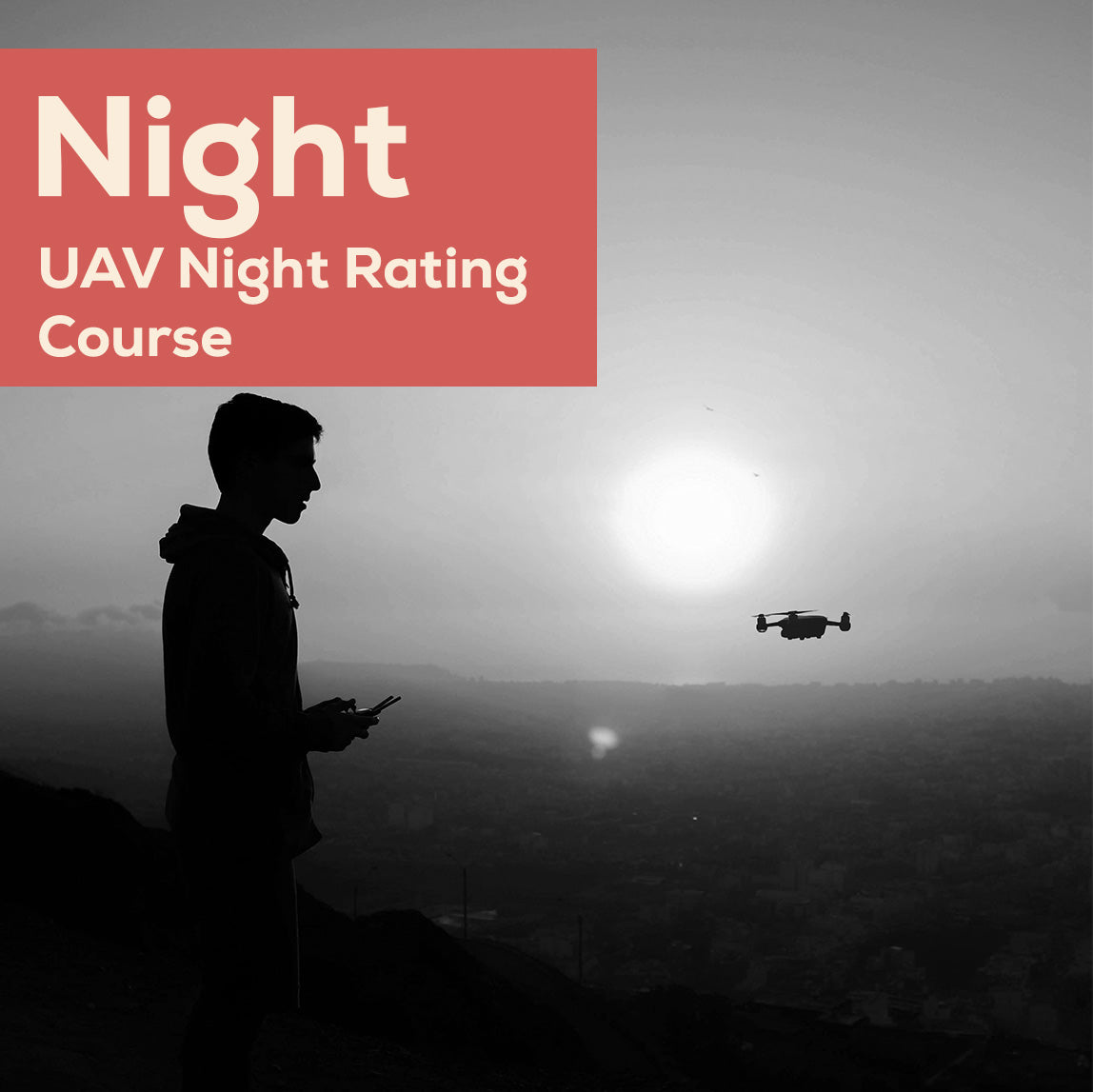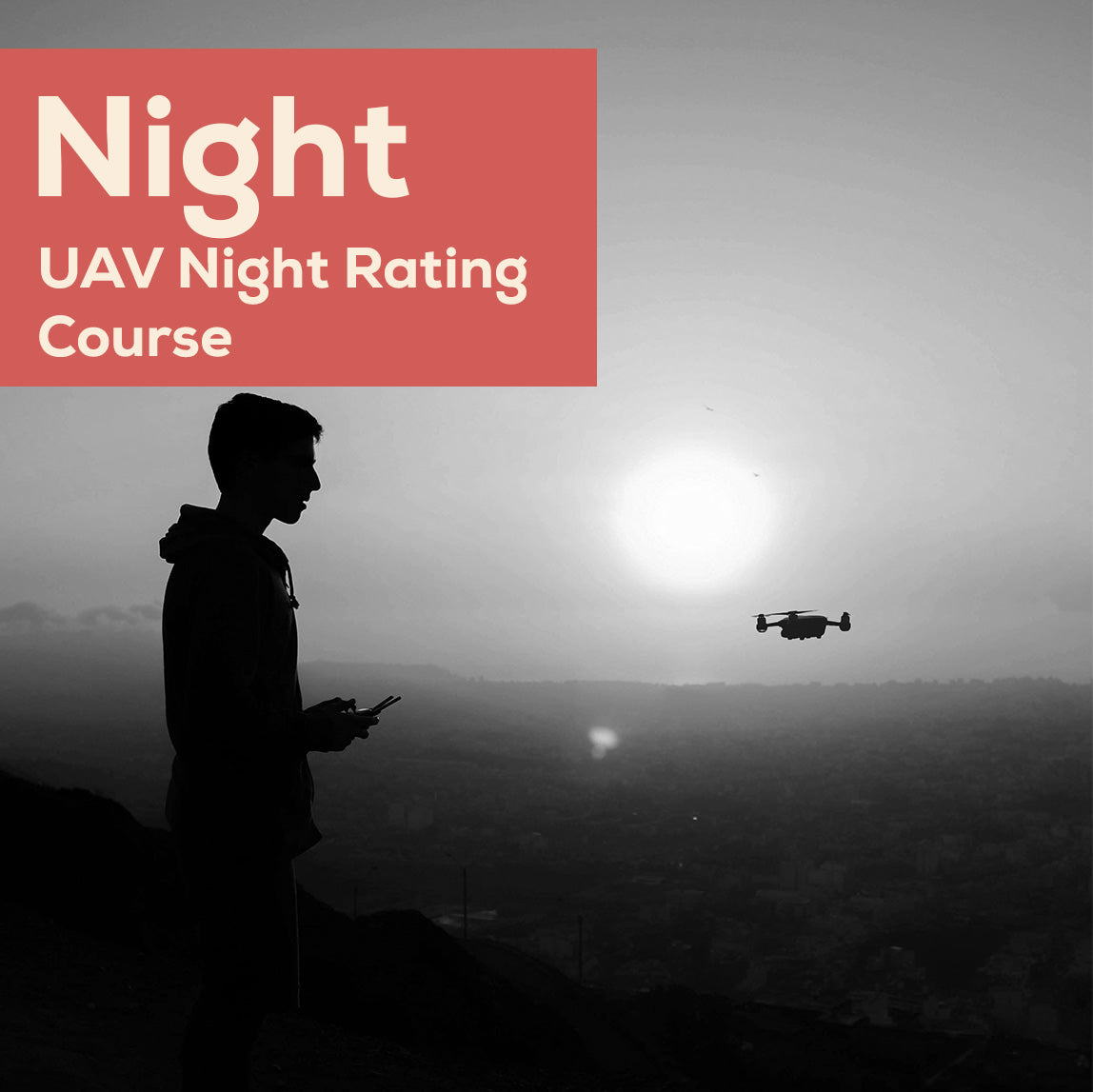Night Rating Course
Night Rating Course
Couldn't load pickup availability
Learn the necessary rules to fly in the hours of darkness with an online theory course and 1-on-1 session with an instructor. This CAA-certified course is provided by Flight Test NZ Part 141 certificate TR52489.
View full details
Is this the right certification for me?
The Night Rating is required for drone pilots who wish to fly at night outside of a shielded operation in accordance with an Unmanned Air Operators Certificate (UAOC) held by an organisation.
If you plan to conduct night flights outside of the Part 101 rules (eg, not flying under shielded conditions), then you will need to hold a UAV Night Rating in addition to your RPAS Part 102 pilot certificate. Thus, the two pre-requisites for holding a UAV night rating are:
- You must be an experienced pilot and already hold an RPAS Pilot Certificate to Part 102 standard
- You will also need to be operating for a UAOC that has night privileges.
If you only plan to fly your drone at night indoors, or within 100m of and below the height of a natural or man-made object (shielded operation), then you do not require a Night Rating. However, it is still recommended to complete night flying training to ensure you understand the unique challenges and hazards associated with operating drones in low light conditions.
Course Details
This night flying course consists of two parts - an online theory component and a practical flight assessment. The online theory covers important topics for conducting safe drone operations at night. It includes the CAA's definition of night flying, how to determine the times that night officially begins and ends, human factors that can affect night flying, drone lighting requirements, and emergency procedures. The content is delivered through reading passages and graphics. Throughout the theory course there are quizzes to test your knowledge and understanding of the key concepts. After completing the online theory, you will need to undertake a practical night flight assessment with a CAA approved training organization. During this flight assessment, you will demonstrate your ability to safely operate a drone at night in accordance with CAA rules and your Part 102 exposition. Upon successful completion of both the theory and practical components, you will be issued with a Night Rating. The practical night flight assessment takes between 2 to 3 hours. This qualifies you to act as pilot-in-command and conduct night drone operations in accordance with your Part 102 UAOC.
Please note that this course needs to be completed within 12 months. This includes all theory modules, final open book exam and practical flight test with one of our examiners. This is to ensure knowledge gained from the course is more easily recalled for the final practical flight test and oral questioning by the examiner. A candidate who exceeds this timeframe will need to recommence with the purchase of a new course.
Course Outline
- Definitions
- Rules, Certification and Recurrency
- Human Factors
- Lighting Systems
- Operational Considerations and Flight Planning
- Emergencies
- Practical Flight Assessment
- Competency refresher requirements.

